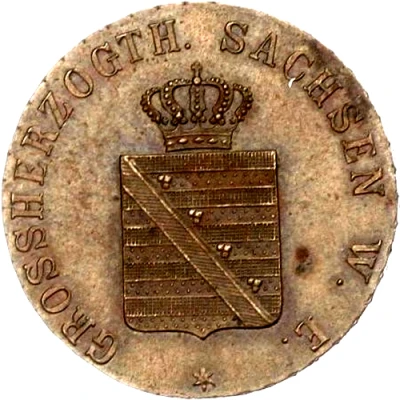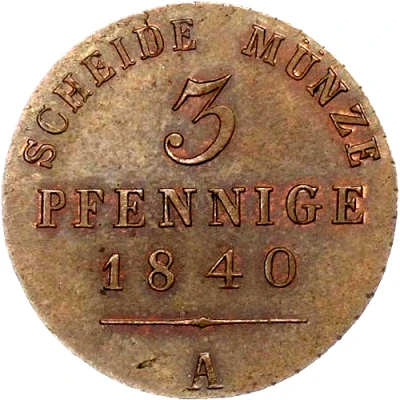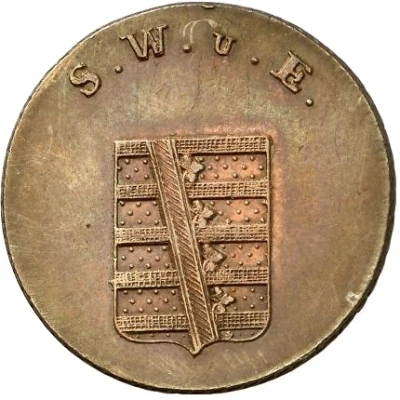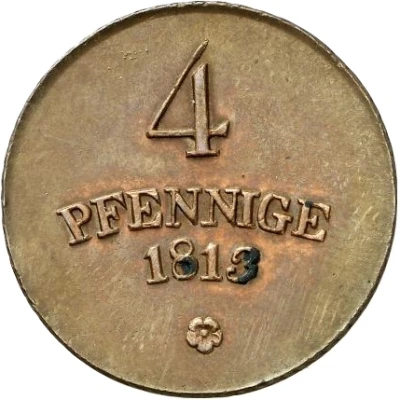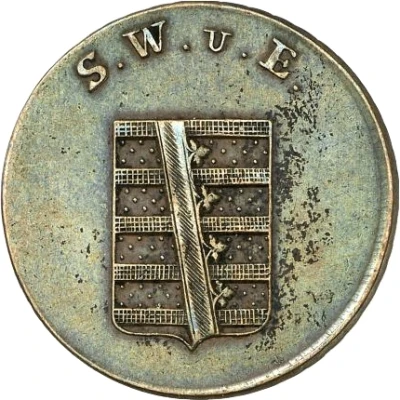
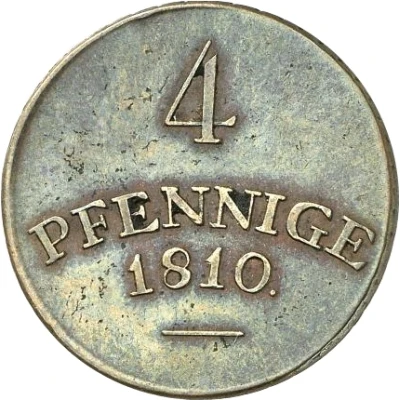

© Heidelberger Münzhandlung Herbert Grün e.K.
4 Pfennige - Charles August
| Copper | 7.7 g | 27 mm |
| Issuer | Duchy of Saxe-Weimar-Eisenach (Saxe-Weimar-Eisenach, German States) |
|---|---|
| Duke | Charles Augustus (Karl August) (1758-1815) |
| Type | Standard circulation coin |
| Years | 1810-1812 |
| Value | 4 Pfennigs (4 Pfennige) (1⁄72) |
| Currency | Thaler (1741-1870) |
| Composition | Copper |
| Weight | 7.7 g |
| Diameter | 27 mm |
| Shape | Round |
| Technique | Milled |
| Orientation | Medal alignment ↑↑ |
| Demonetized | Yes |
| Updated | 2024-10-05 |
| Numista | N#125607 |
|---|---|
| Rarity index | 82% |
Reverse
Curved 3-line inscription with date, line below.
Script: Latin
Lettering: 4 // PFENNIGE // 1810.
Interesting fact
One interesting fact about the Standard circulation coin 4 Pfennige - Charles August 1810-1812 from Duchy of Saxe-Weimar-Eisenach (Saxe-Weimar-Eisenach, German States) made of Copper weighing 7.7 g is that it was minted during a time of great economic and political change in Germany. The coin was issued during the reign of Charles August, who was the Grand Duke of Saxe-Weimar-Eisenach from 1810 to 1812. During his reign, Charles August implemented a number of reforms aimed at modernizing the economy and government of the duchy, which included the introduction of a new currency system. The 4 Pfennige coin was part of this new currency system and was used widely in everyday transactions. Despite its small denomination, the coin is a valuable piece of history and a reminder of the economic and political changes that took place in Germany during the early 19th century.
